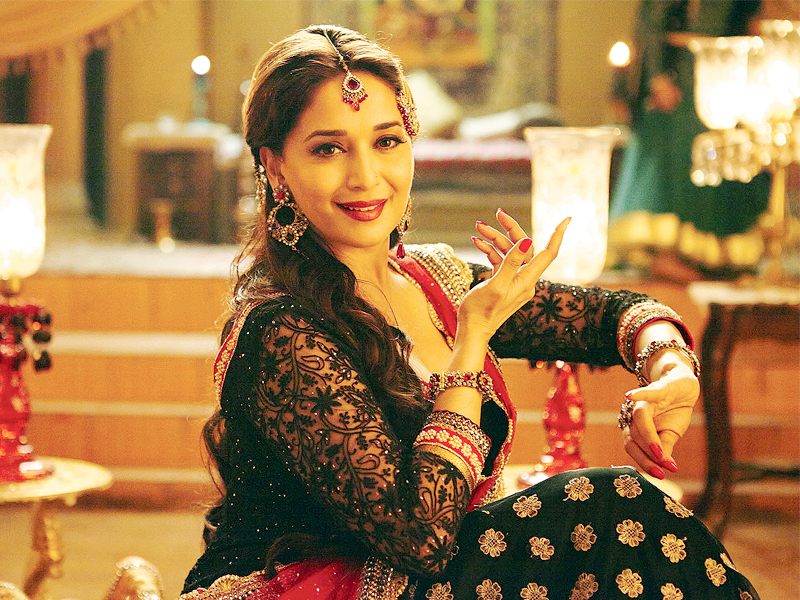
KARACHI:
I love a film with style. If the plot or acting isn’t up to scratch, at least you can feast your eyes on the set and costumes. In films like Dedh Ishqiya, where the storyline and performances are superb, great styling is the delicious icing on the cake.
While actors Arshad Warsi and Huma Qureshi are suitably dressed for their respective roles, it’s the Nawabi styling of Madhuri Dixit and Naseeruddin Shah that stands out in Dedh Ishqiya. Naseeruddin Shah’s sherwanis and qaraqul (Jinnah cap) are a little too ‘Mohammed Ali Jinnah on a bank note’ to appeal those on this side of the border, but his shawls and kurtas are enviable.
Costume designer Payal Saluja has concentrated on timeless classics such as Lucknowi chikankari in developing the Nawabi theme. A few key elements bring together her sophisticated yet regal look.
Lucknowi Chikankari
Ethereal and delicate, Chikankari has an enduring charm that reeks subtlety of old money. Saluja has used Lucknowi chikankari in several of Madhuri’s outfits. The beige peshwaz that Madhuri dances in to Jagaave Sari Raina is an all-over chikankari, trimmed with rich jamawar.
One of Madhuri’s most attractive outfits is a pale pink Lucknowi sari with simple gold edging. Lucknowi chikankari is particularly appealing in white and pastel shades and the sari shows the elegance of this embroidered fabric.
Madhuri also wears an exquisite black chikankari kameez with a banarsi lehenga in the song Hamari Atariya Pe which plays at the end during the title credits. The delicate embroidery of the chikankari fabric adds a lush yet subtle texture to the outfit.

Shawls
The shawls in Dedh Ishqiya are simply gorgeous. The sheer variety is fascinating –Jamavar, Kalamkari and Kashmiri embroidered shawls abound. Naseeruddin Shah as Khaalu is dressed mainly in Sherwanis and beautiful chikankari kurtas that are paired with some wonderful shawls. The Kalamkari shawl he wears when meets Begum Para (Madhuri) on the roof is an exceptional piece. The muted colours of the shawls worn by Khaalu and Begum Para add a sense of antiquity to their scenes that enhances the atmosphere of the film.
The draped dupatta
Madhuri carries a dupatta on her head pretty much in every scene. The look is consistent with the idea of a Begum from a certain era but, what stands out is the elegance of the draping. The sheer delicate dupattas are arranged in the same way for every outfit — a deep V at the neckline and enough fabric to gracefully frame Madhuri’s face. The look is an elegant option for brides, particularly because a poorly draped dupatta can ruin a bridal ensemble. Brides wanting to channel this look should bear in mind that it works best with a sheer dupatta and that the traditional one-shouldered drape will work better for heavier dupattas.
Monochrome
Madhuri’s ‘wedding’ outfit conforms to the mix and match trend with a red dupatta, green shirt and off-white lehenga, but most of her outfits are resolutely in a single vibrant colour. She first appears in a stunning emerald green ensemble accented with gold embroidery and trimmings. Whether she is in a peshwaz, gharara, lehenga or sari, Begum Para is almost always dressed in a single colour. That colour may be accented with contrasting trimmings or embroidery but Begum Para’s styling is a reminder of how effective and elegant monochrome can be.
The jhoomar
The tikka has been having a fashion moment recently. It isn’t just for brides anymore — it’s been seen on everyone from teenagers to aunties — adding a formal yet trendy look to wedding ensembles. The jhoomar, on the other hand, is such a traditional and ostentatious piece that even brides have balked at it. Costume designer Saluja describes the jhoomar as a trademark of a Begum, and Madhuri wears one almost throughout the film. Madhuri’s look in Dedh Ishqiya shows that a delicate, correctly worn jhoomar can add a regal look without overwhelming a woman’s features.

Classic cuts
It’s lovely to see an actor like her in traditional cuts for the majority of a movie instead of simply in a wedding scene. Obviously this only works because this is a period film where Madhuri plays a Begum Nawab. Still the peshwazes, ghararas and lehengas lend Madhuri’s character a certain grace that’s a pleasure to watch.
Madhuri’s hair and makeup is also worth mentioning. The tumbling curls and natural, flawless make-up enhance her beauty and give a youthful spin to costumes that could have been very ageing.
Dedh Ishqiya is one of the rare movies that deserve a second look simply for the beauty of its costumes. Payal Saluja reportedly spent months on the details, scouring lanes in Delhi and Lucknow for just the right materials and jewellery. Her Nawabi style is poetry on screen and perfect for the film’s overall mood.
Oxford-grad Salima Feerasta is a social commentator and lover of style in any form or fashion. She blogs at karachista.com and tweets
@karachista
Published in The Express Tribune, January 26th, 2014.
Like Life & Style on Facebook, follow @ETLifeandStyle on Twitter for the latest in fashion, gossip and entertainment.
COMMENTS (1)
Comments are moderated and generally will be posted if they are on-topic and not abusive.
For more information, please see our Comments FAQ


















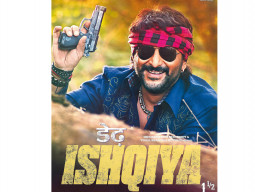
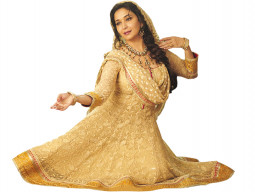
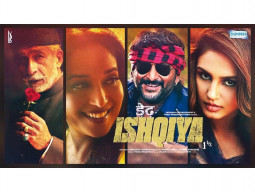
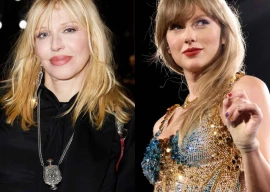

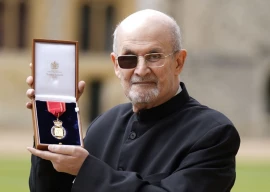
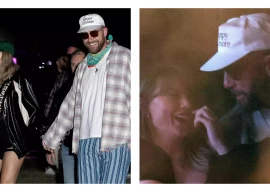
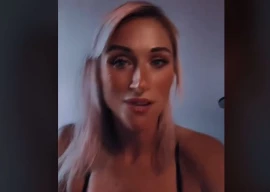
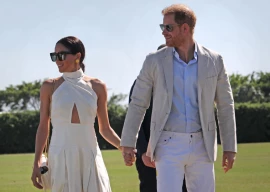





















Your observations and expertise on attires and costumes demands a salute...